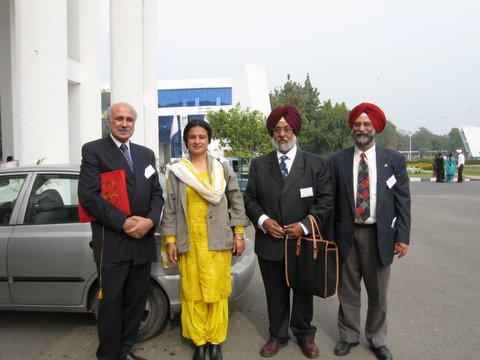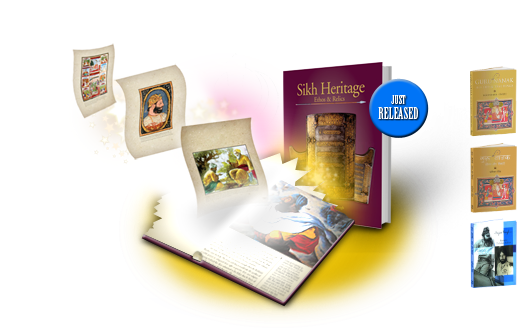by Roopinder Singh
THEY were a bunch of restive boys, whose visit to Chandigarh had begun with a pilgrimage to the Govt Museum and Art Gallery in Sector 10. They were tired after travelling back from the Queen of the Hills. A few had been sick, since they were not used to hill roads, but they perked up when their Principal told them the three-foot sculpture they were looking at was Buddha’s foot—“the other foot is in Lahore”.
Roopinder Singh and Fakir Syed Aijazuddin, OBE, in front of the Govt Museum and Art Gallery in Sector 10, Chandigarh. — photo by Gupi Bhattal
Fakir Syed Aijazuddin, OBE, is uniquely qualified to talk about the two museums, and the treasures that they hold. He is chairman, Executive Committee of the Lahore Museum, and has been visiting Chandigarh since the mid-1950 when the museum was set up under the leadership of Dr M S Randhawa. Aijazuddin and his wife Shahnaz have fond memories of Dr Randhawa’s hospitality.
Aijazuddin wears many a cap — chartered accountant, with experience in automotive, fertiliser, oil and gas, insurance and investment banking sectors. He is also an author with many books to his credit, and now head of his alma mater, Aitchison College, Lahore, where many of the scions of the most-noted families of the region studied. He had come to India, leading a party of young students who had to join in the celebrations of another fine old institution, Bishop Cotton School, Shimla, as it celebrated its sesquicentennial this year.
The Yadavindra Public School, Patiala, delegation with the Principal of Aitcheson College, Lahore, in Chandigarh.
My alma mater, Yadavindra Public School, Patiala, however, traces its lineage back to Aitcheson College because after Partition, the Maharaja of Patiala founded YPS around a nucleus of Aitchisonians — teachers and students — who had been displaced from Lahore. As a Yadavindrian, my friend Gurpreet Bhattal had asked me to join a delegation that met these Aitchisonians in Chandigarh, something I had gladly done.
Yadavindrians and Aitchisonians pose in front of the museum in Chandigarh
“One-third of the Lahore museum came to Chandigarh,” Aijazuddin told his students, as he was escorted by the director, NPS Randhawa, who took them around, showing miniatures and sculptures of a heritage that preceded the international border. As Aijazuddin took diverse strands and wove them into a tapestry of artistic history of the region, he reminded one of Chandigarh’s own Prof B N Goswamy, interacting with whom is an education. No wonder the two families have strong ties.
“If we expect them to respect our culture, we must do the same,” he gently chided his boys, as they broke into giggles over some of the pictures, even as he explained the relationship between various gods and goddesses to them. Aijazuddin has studied pahari paintings as an art historian and I was reminded of the first time that I met Aijazuddin, at a seminar on “The Arts of Punjab” held at Punjabi University, Patiala, in 2006, where he gently supplied a detail that enhanced my caption during my presentation on the Murals of GuruHarsahai. Aijazuddin had earlier taken the audience on an impassioned trip of Lahore down the ages through painting and sketches.

Fakir Aijazuddin, Gurmeet Rai, Bhayee Sikandar Singh and Roopinder Singh after the concluding session of The Arts of Punjab seminar at the Department of Fine Arts, Punjabi University, Patiala on February 14, 2006.
Aijazuddin laments that young Indians and Pakistanis are not aware of each other’s cultural heritage these days. As the visiting children were told to go to Sector 17 for shopping and recreation for a few hours, their Principal said he wanted more exchanges between people who have not visited each other’s countries, not just those who have the nostalgia for the land that was once there.
Gurpreet Bhattal and Fakir Syed Aijazuddin, OBE
One reads of a Lahore in the grip of violence practically every day. The students of the elite institution and their principal represent the other side of our old cultural capital. Many of us like my friend Gurpreet and I, who live in Corbusier’s modern city, have never visited Pakistan, but we have a foot in Lahore and quite like the Buddha statue, our ties transcend the physical divide.



